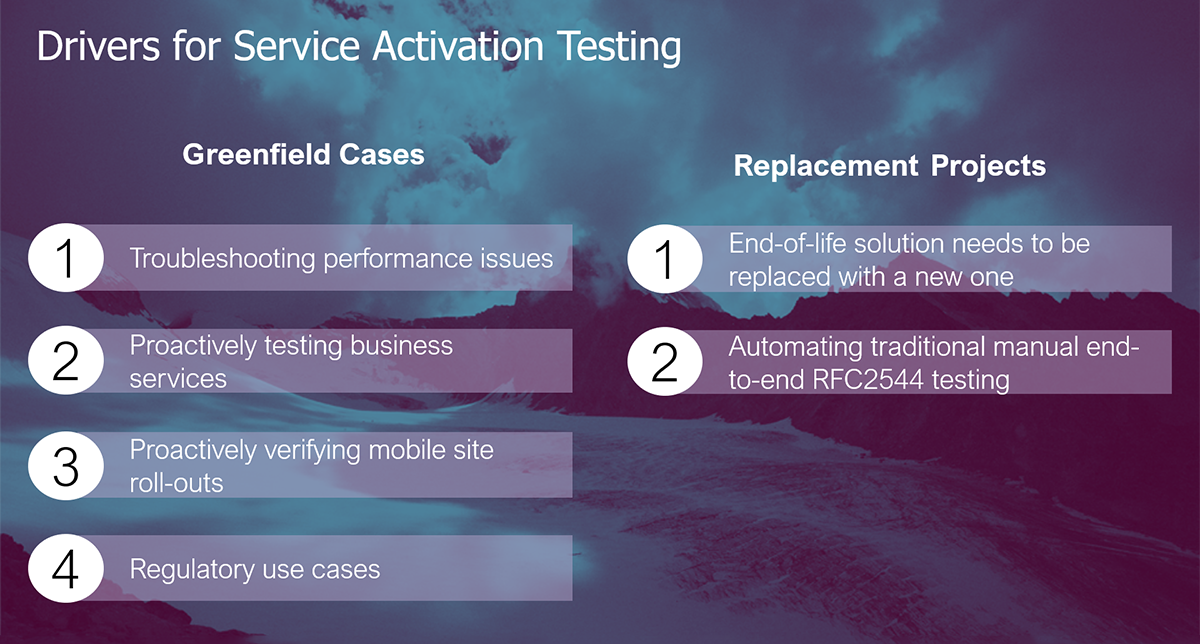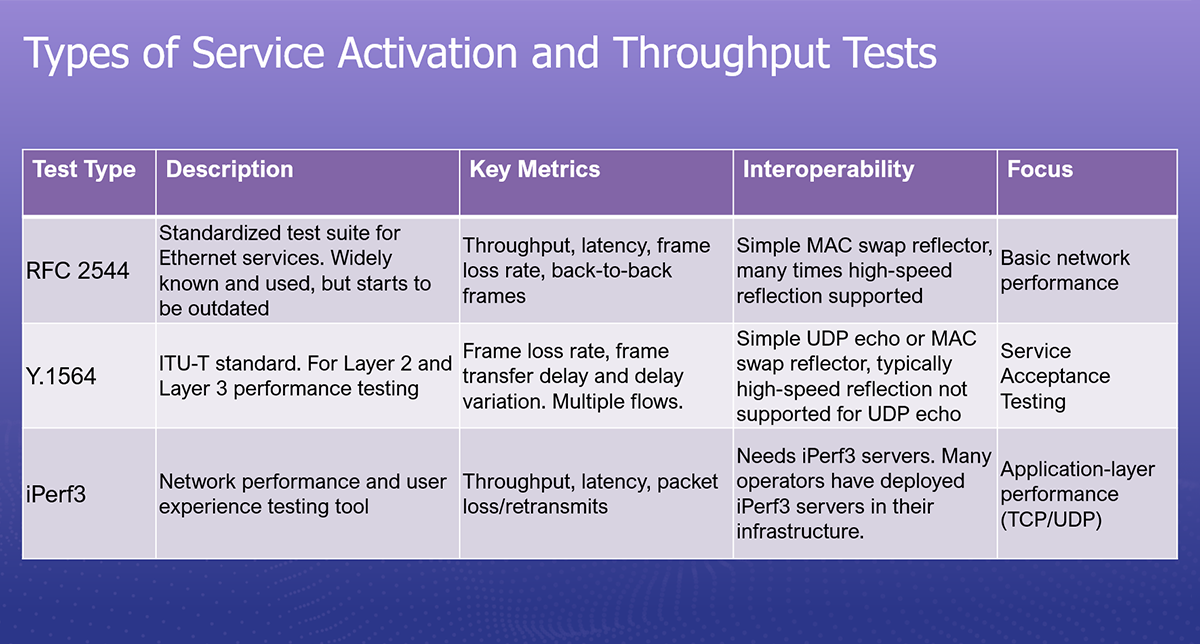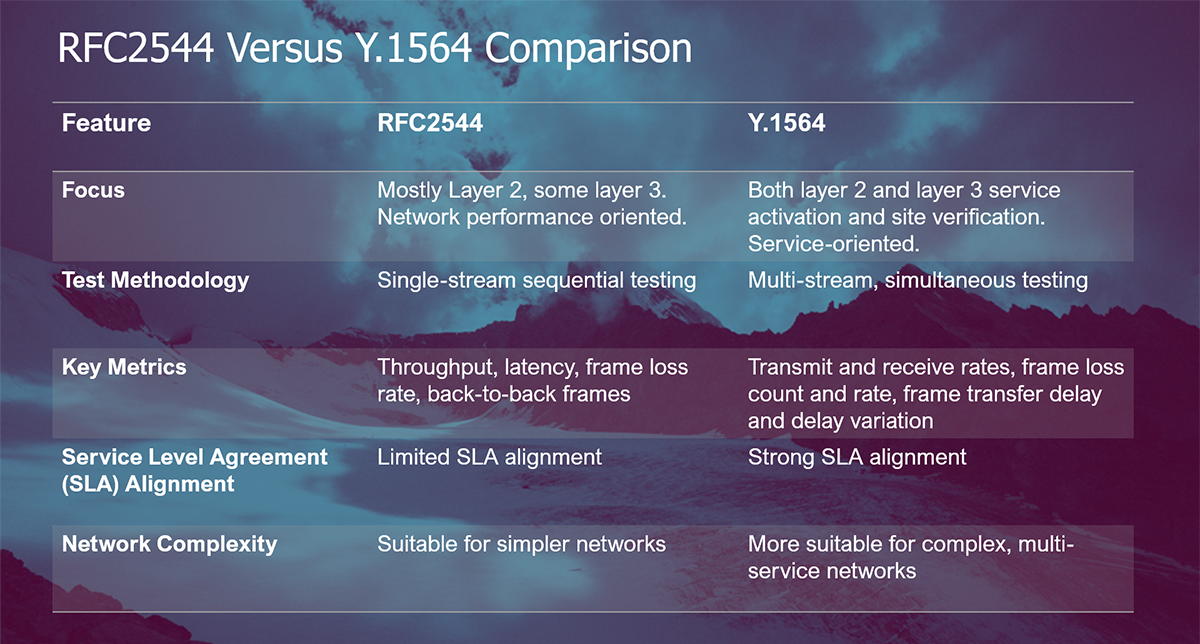Introduction to Service Activation Testing for Data Transport Networks

Service Activation Testing (SAT) standards have been in place for many years. The classical RFC2544, for instance, was already defined in 1999 and its successor Y.1564 was standardized in 2011. They certainly have been used since then for verification of network performance and quality, but it is only with the recent focus on user experience that the usage of these test methodologies has exploded. Service providers want to proactively ensure that the connectivity to a business site or base station is okay and the expectations are met before going live. In this blog, we will introduce the major methodologies for service activation testing and show some of the use cases.
Understanding Service Activation Testing
SAT involves a series of tests to verify the functionality, performance, and reliability of a network service. These tests are typically conducted in a live network for site verification. The goal is to identify and rectify any issues before the service is handed over to production.
There are multiple drivers for the SAT. Troubleshooting performance issues with the network is the most obvious one, but nowadays also proactively verifying business services and mobile site roll-outs are increasing in importance. Also, regulatory bodies are requiring more and more reporting of user experience-related KPIs and part of those KPIs are related to SAT.
Finally, there are some replacement use cases where an end-of-life solution needs to be replaced with a more modern solution or manual RFC2544 testing solutions with hand-held devices are being replaced with automated end-to-end testing solutions. The drivers are summarized below:

Key Testing Methodologies
RFC 2544 is the classic version and has been widely used for testing packet-switched data networks. It provides a framework for measuring network performance metrics such as throughput, latency, and packet loss:
- Throughput tests measure the maximum data rate that can be sustained between two network endpoints.
- Latency tests evaluate the delay experienced by packets as they traverse the network.
- Frame loss tests assess the percentage of packets that are lost during transmission.
- Back-to-back frames measure the burst tolerance of the network
The strength of RFC2544 is that it is a well-established and widely supported standard and provides a comprehensive set of tests for basic network performance. Its limitations are that it
may not be sufficient for complex network scenarios, especially those involving multiple traffic flows and Quality of Service (QoS) requirements. Use of it can also be considered time-consuming to configure and execute.
Y.1564 is an ITU-T standard for testing IP and Ethernet networks. It offers a comprehensive set of tests to assess the performance of networks, including both data and voice services. Key tests are:
- Configuration tests: Verify the performance of every individual flow including both latency, jitter and frame loss ratio KPIs as well as sent and received data rates.
- Performance verification test: Verify the performance of the aggregate flows again looking at both latency, jitter, and frame loss ratio as well as sent and received data rates.
The strengths of Y.1564 are that it has a comprehensive suite of tests for Ethernet and IP networks and supports a wide range of service types, including data, voice, and video. It can be used to test complex service mix scenarios, including those with multiple traffic flows and varying QoS requirements. Y.1564 can be more complex to configure and execute than RFC 2544 unless the supporting management system offers versatile support for template usage or similar techniques to hide the complexity.
iPerf3 is a popular network performance testing tool that measures the maximum achievable bandwidth on TCP and UDP. The key tests of iPerf3 are:
- Bandwidth Tests: Measure the maximum achievable data transfer rate.
- Latency Tests: Evaluate the round-trip time of packets.
- Packet loss/retransmits: Measure the amounts of packets lost (UDP tests) or the amount of retransmits (TCP tests).
The strengths of iPerf3 are that it is easy to use and configure and provides accurate and reliable performance measurements. It can be used for both basic and advanced network testing scenarios. The iPerf3 test is not as comprehensive as RFC 2544 or Y.1564 and it is not suitable for testing complex network scenarios with multiple traffic flows and QoS requirements.
A summary of the different service activation tests and throughput tests is provided below:

Final Notes on RFC2544 and Y.1564
RFC2544 is the classical throughput testing protocol. It was originally designed for device throughput testing but it was found that the protocol was very good also for testing throughput in real networks. However, the lack for true SLA verification was the drawback of the protocol. It has been superseded by Y.1564, which has very good functionality for verifying SLAs, both on an individual flow level as well as running all needed flows in parallel to verify performance for the aggregated flows. See below for a comparison of the two protocols.

Conclusion
Service Activation Testing (SAT) is a critical component of network service deployment and maintenance. By employing a combination of RFC 2544, Y.1564, and iPerf3, network engineers can comprehensively evaluate the performance and reliability of their networks.
A well-executed SAT test can help to:
- Identify and resolve network issues before they impact end-users.
- Optimize network performance by identifying bottlenecks and inefficiencies.
- Ensure that new services are deployed successfully and meet performance expectations.
- Validate network changes and ensure that they do not negatively impact service quality.
By understanding the strengths and limitations of each testing methodology and tailoring the testing approach to specific network requirements, network engineers can effectively utilize SAT to deliver high-quality network services with excellent user experience.
About Creanord
Creanord offers technology solutions for network performance measurements and quality assurance. Driven to turn data into outperforming networks, Creanord helps mobile operators, managed service and wholesale providers as well as critical communications providers to design, offer and deliver services with confidence.
With PULSure, service providers can track network performance and user experience in order to meet the most demanding service needs of their customers.
Since 2000 Creanord has served customers that offer the most demanding networks and applications making societies smarter, businesses more competitive and our lives safer.
Creanord is headquartered in Helsinki, Finland with a global operations and partner network.